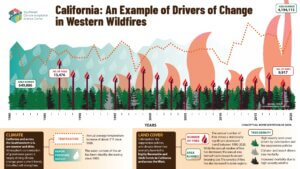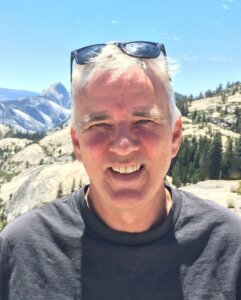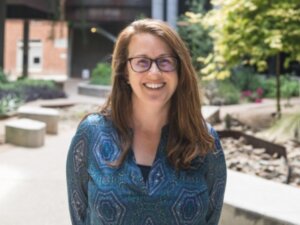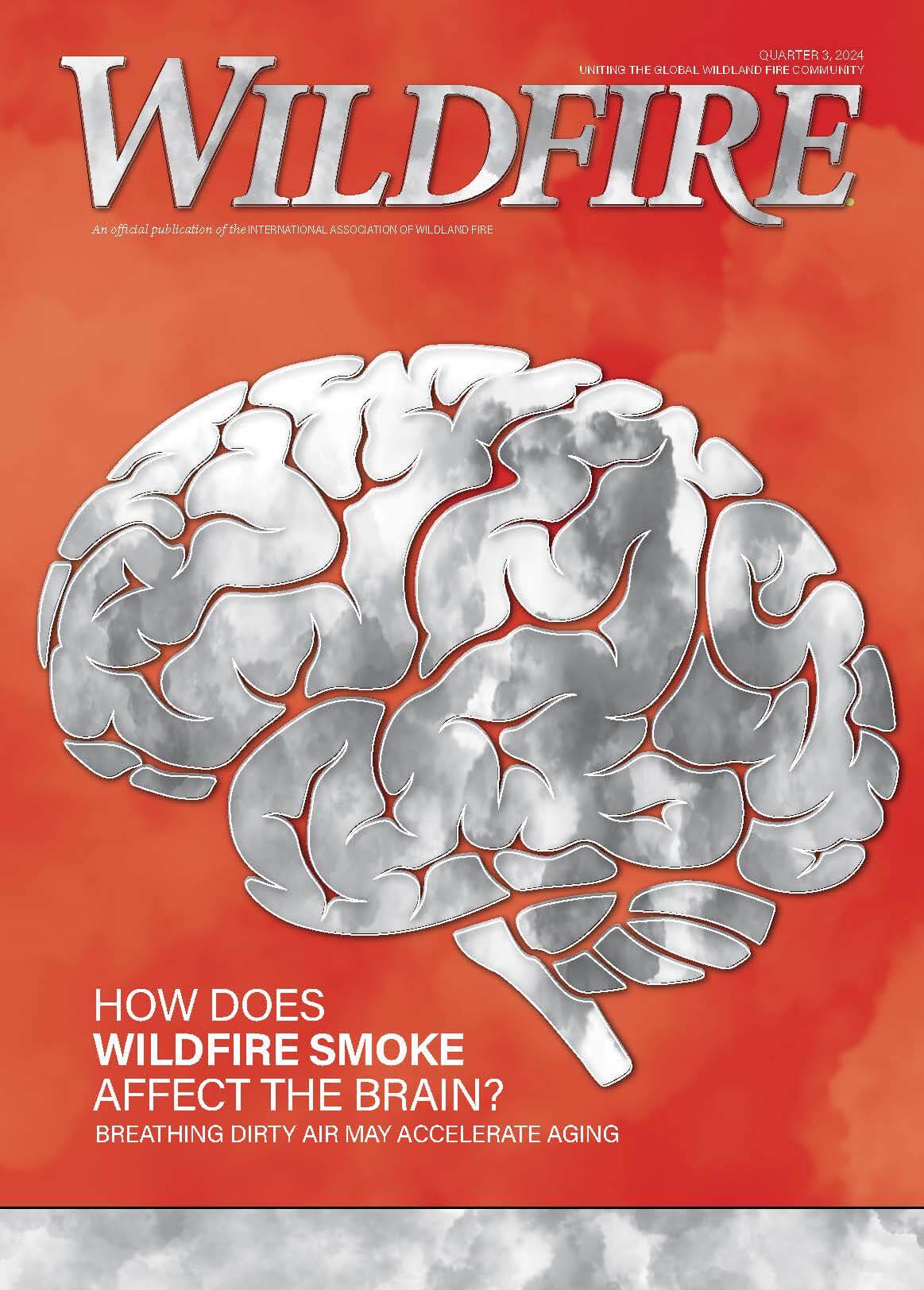DRIVERS OF CALIFORNIA’S CHANGING WILDFIRES
State Has Potential To Be A Model For Change
BY TAMARA WALL, GLEN MACDONALD, CAROLYN ENQUIST, AND SARAH LEROY
In recent decades, the western United States and Canada experienced striking increases in the size and severity of wildfires, which resulted in a steep rise in fire suppression costs.
In an article recently published in the International Journal of Wildland Fire, 19 authors affiliated with the Southwestern Climate Adaptation Science Center synthesized available research and assessed the major drivers of changing wildfire dynamics in California.
• The authors specifically addressed four questions:
• How has wildfire and land cover changed since 1980?
• What is the role of climate change?
• What is the role of historical land management policy (pre-1980)?
What are the effects of recent land management approaches and variations in ignition sources on California fire regimes since 1980?
How have wildfire dynamics and land cover changed since 1980?
While recognizing that wildland fire is a natural and ecologically beneficial process in many of California’s ecosystems, we identified several key trends related to shifts in wildfire dynamics and land cover since 1980. The first is the growing prominence of large fires (figure 1). This is evident through a significant increase in annual area burned over the same period that the annual number of wildfires decreased (19802020). Second, since 1984, fire severity has increased in forests at low and middle elevation (and some high elevation forests), with negative impacts on landscapes and communities. Third, land-cover changes such as development and fire exclusion have influenced the abundance of fuels. For example, California fire histories reconstructed from fire-scarred trees (e.g., mixed conifer) indicate that for centuries before 1850, these same areas tended to burn every five to 20 years, which controlled fuel loads and reduced fire severity. In fact, more than four million acres may have burned each year in these areas. Following decades of fire suppression and resulting accumulation of fuels, some of these forests experienced severe wildfires between 2015 and 2020, contributing to the state’s significant increases in yearly acreage burned, especially at high severity.
Land-cover changes associated with the spread of human communities and development into higher fire-risk areas have increased the economic and human costs of wildfires, such as the loss of community, homes and businesses, lives and the stress of evacuations. For example, the estimated economic cost of the 2018 California wildfires was $27.7 billion in capital losses, $32.2 billion in health costs, and $88.6 billion in indirect losses, such as the impacts to businesses that had to shut down or reduce operations. While human development and wildfire losses have spread into habitats throughout the state, most structures damaged by California wildfires are in vegetated settings outside of forests.
How has climate change affected wildfires in California since 1980?
Human-caused increases in greenhouse gasses are the leading contributor to climate change and are contributing to warmer temperatures, drier air masses, longer and more severe droughts, longer fire seasons, and drier vegetation, all of which contributed to increases in the annual area burned in California. The current climate of California has likely become warmer and more arid than any in the past 1,000 years. With warming, the wet season in California has shortened over the past six decades, contributing to a longer fire season. Warming has also accelerated snowmelt in the Sierra Nevada since the mid-twentieth century; wildfire itself may be contributing to this trend with firescarred areas showing reduced snowpacks. Increasing atmospheric vapor pressure deficit (VPD) has drawn recent attention as a particularly important drought metric that is directly linked to drier vegetation conditions that fuel severe fires. These climatic drivers of fire activity affect habitat throughout the state and are projected to grow stronger this century, leading to extremely hot and dry weather events with high fire risk more likely (Figure 1, page 38).
What is the role of historical land management (pre-1980) in California wildfires?
Indigenous burning practices have a long history across California and there is growing support for Indigenousled cultural burning practices. Modern prescribed fire strategies are used primarily to reduce wildfire risk and promote ecological benefits. In contrast, the broader cultural and stewardship goals of Indigenous cultural burning practices offer insights into how our societal approach might move to a land stewardship focus where fire is fully integrated into a larger set of goals and objectives.
It is challenging to generalize the effects of reduced Indigenous burning and more recent land management of the past 150 years because fire regimes and land use have always been highly variable in California. For example, interior chaparral, sagebrush, and pinyon-juniper ecosystems of the Great Basin likely burn today at higher frequencies than under precolonial conditions, yet the apparent driver is not more-frequent anthropogenic ignitions but rather the invasion of non-native annual grasses, such as cheatgrass (Bromus tectorum). Nineteenth and 20th century logging practices and aggressive fire suppression altered forest structures and composition, ultimately increasing vegetative fuels for fire in some regions. Higher elevation forests above 8800 feet have not experienced the same degree of fire suppression-driven ecosystem change as the lower elevation drier forests, simply because their natural fire frequencies are much lower–although the incidence of fire is increasing in high elevation forests in the Sierra Nevada. A lack of conclusiveness regarding past conditions in specific areas can lead to uncertainty among managers attempting to restore past, presumably more resilient conditions. For example, wet coastal forests in northern California support a complex fire regime where Indigneous ignitions were locally frequent before settler-colonist settlement (although these areas also had ignitions by lightning).
What are the effects of land management and ignition sources on fire regimes since 1980?
1. Recent changes in fuel conditions related to management practices
Forest fuel management is a stated priority for California, but is expensive. Costs to carry out fuel reduction projects that do not have economic outlets are very high, sometimes exceeding $5000/acre ($12,500/hectare). The closure of most of the sawmills across California and the collapse in the originally robust bioenergy market have created an economic barrier to mechanical forest thinning efforts. Managing a forest for timber resources while simultaneously maintaining a healthy fire regime can, however, also create conflicting priorities. For example, a 2022 study of yellow pine and mixed-conifer forests in California found that fire severity in privately managed industrial forests was 1.8 times greater than on similar public forest lands. The authors of that study concluded that current management approaches on the private timberlands may be driving these high-severity fires.
2. Patterns of ignition related to human activity
Human-caused ignitions sparked more than 90 per cent of recorded fires in most California counties between 1919 and 2016, driven by arson, debris burning, smoking, recreational activities, equipment operation, vehicles, and power infrastructure. Humancaused ignitions are particularly dominant in lowland ecosystems west of the Sierra Nevada and along the coast, while lightning sparked more fires in higherelevation mountain ranges and deserts. Eight of the 20 largest wildfires recorded in California history are attributed or partially attributed to human activity. Human-ignited fires are also responsible for at least 12 of the 20 most destructive fires in terms of structures and lives lost.
Although the number of human-caused fires increased with population growth in the early to mid-twentieth century, their frequency has declined since 1980 (with the exception of wildfires sparked by powerlines). The decline in most human-caused ignitions in the past 40 years likely reflects a number of factors, including increasing efficiency of fire prevention, fire-resistant infrastructure, declining rates of smoking, anti-arson measures, and wide public wildfire messaging and education. Given these factors, this suggests that the trend of increasing area burned in California over the last four decades cannot simply be explained by increasing numbers of human-caused ignitions. However, human-caused ignitions remain a major contributor to the current wildfire regimes in California and the western United States.
3. Recent practices in fire management and suppression strategies
The importance of fire, including a mixture of severity levels, in the maintenance and restoration of many California ecosystems is widely recognized. Within some wilderness areas, such as Yosemite and Sequoia & Kings Canyon National Parks, resource managers have minimized suppression of naturally ignited fires when critical resources are deemed at lower risk of harm from the wildfire event. This practice, although it can initially contribute to annual area burned totals, has proven effective in reducing fuels, increasing forest resilience, and minimizing the severity of subsequent wildfires. Yet, five decades after federal agencies formally recognized the importance of fire as an ecological process, both managed wildfire and prescribed fire remain underutilized as management tools in the western United States.
Fortunately, recent developments in California show reason for optimism, including the uptick in tribal and non-tribal private interest in traditional prescribed and Indigenous cultural burning, the development of new National Forest plans that promote managed wildfire, passage of the 2021 Bipartisan Infrastructure Law (which includes unprecedented investments for fuels management and firefighting resources), and the 2021 California Wildfire and Forest Resilience Action Plan. The plan sets rigorous targets for vegetation management, fire use, and integration of Indigenous burning practices while also proposing avenues for funding and implementation.
The future of wildfire in California
California’s 21st-century wildfire regimes reflect the confluence of intersecting factors including the overarching influence of climate change, past and present forest management and land-use, and the role of human- and lightning-caused ignitions. The challenges posed by climate change for fire management will continue to grow. Going forward, it will be important to recognize the diversity within California’s ecosystem types, land-uses, and population density in the selection, prioritization, and implementation of fuel and fire management strategies. People and infrastructure in many regions across California will remain vulnerable to high severity fire under all but the most robust local fuel reduction, defensible space, and fire-hardened building requirements. Yet, by leveraging the state’s innovative human capital and appreciable financial resources, California has potential to serve as a wildfire resiliency model for diverse wildfire-prone regions across North America and around the globe.

Acknowledgement
We would like to acknowledge the diverse authorship team of scientists affiliated with the Southwest Climate Adaptation Science Center (SW CASC) for contributing their time and expertise in the development of this synthesis and assessment of the recent scientific literature. This publication was supported by Grant #G18AC00320 from the U.S. Geological Survey (USGS) Southwest Climate Adaptation Science Center. Its contents are solely the responsibility of the authors and do not necessarily represent the views of the Southwest Climate Adaptation Science Center or the USGS.
 Dr. Tamara Wall is a research professor and the co-lead of the Climate Center Group at DRI, in Reno, Nevada, where she co-leads an interdisciplinary research and engagement team focused on producing actionable research that supports climate adaptation and wildfire resiliency across the western United States.
Dr. Tamara Wall is a research professor and the co-lead of the Climate Center Group at DRI, in Reno, Nevada, where she co-leads an interdisciplinary research and engagement team focused on producing actionable research that supports climate adaptation and wildfire resiliency across the western United States.
 Glen MacDonald is a Distinguished Professor of geography at UCLA, holds the endowed chair of California and the American West, and is director of the UC White Mountain Research Center. He conducts research on long-term climate change, its drivers and impacts.
Glen MacDonald is a Distinguished Professor of geography at UCLA, holds the endowed chair of California and the American West, and is director of the UC White Mountain Research Center. He conducts research on long-term climate change, its drivers and impacts.
 Carolyn Enquist has worked at the nexus of science, communication, and practice to enhance the effectiveness of biodiversity conservation and climate change adaptation for more than two decade. She has served as a lead author on the IPCC Working Group 2 6thAssessment Report’s North America chapter and as an author on three U.S. National Climate Assessment reports. Enquist currently works for the U.S. Geological Survey and is the acting federal director for the Southwest Climate Adaptation Science Center.
Carolyn Enquist has worked at the nexus of science, communication, and practice to enhance the effectiveness of biodiversity conservation and climate change adaptation for more than two decade. She has served as a lead author on the IPCC Working Group 2 6thAssessment Report’s North America chapter and as an author on three U.S. National Climate Assessment reports. Enquist currently works for the U.S. Geological Survey and is the acting federal director for the Southwest Climate Adaptation Science Center.
 Sarah LeRoy holds degrees in ecology and geosciences from the University of Arizona. Sarah now works as the science applications and communications coordinator for the Southwest Climate Adaptation Science Center (SW CASC), where she bridges the gap between science and society by working closely with decision makers to get them the scientific information they need to make decisions to prepare for the impacts of climate change.
Sarah LeRoy holds degrees in ecology and geosciences from the University of Arizona. Sarah now works as the science applications and communications coordinator for the Southwest Climate Adaptation Science Center (SW CASC), where she bridges the gap between science and society by working closely with decision makers to get them the scientific information they need to make decisions to prepare for the impacts of climate change.
